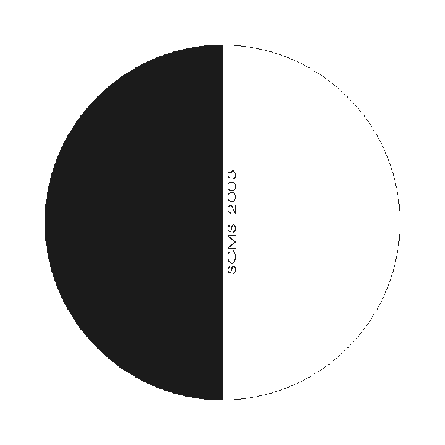MYCOLOGY AND THE BEGINNER
Mycology is a vast and complex subject. Many people are professional mycologists. Many more are amateur mycologists. And even more people know only several edible species which they hunt regularly from season to season, from year to year.
What is the best way to learn your way around the fungi? First, join a club. Second, attend meetings and field trips regularly. Third, ask questions. There are basically two types of “fungi”. The microscopic, and the large fleshy fungi. The large fleshy fungi is our society’s main focus.
Of these large fleshy fungi there are basically three categories: (1) Edible, (2) Poisonous, (3) Worthless (non edible and not poisonous). In the Pacific Northwest we have perhaps up to 10,000 different species of fungi. Of these, approximately 100 are edible and of these about 50 species are commonly collected and considered good or excellent. Many species are deadly.
The best way to begin sorting out the maze of fungi, after you belong to a society, is to attend meetings and field trips. THEN concentrate on learning only two or three species a season, and learn them WELL. Use your mushroom identification books with each specie to familiarize yourself with the terminology and characteristics you need to look for. After a year you will be able to recognize from 6-
The word Mycology means the study of fungi, i.e. mushrooms also commonly called toadstools. These words are interchangeable although “mushroom” is generally thought of as edible and “toadstool” is thought of as poisonous. When one thinks of “mushroom” the picture comes to mind of the common store-
There is, however, much more to mycology than the store mushroom, or even the wild woodland and lawn mushrooms. There is a whole world of microscopic fungi constantly at work for and against us, namely, the yeasts, molds and smuts. These can cause disease (athletes foot), cure disease (penicillin), make cheese (blue), or turn fruit juice into wine, clean up toxic waste, or devastate grain and vegetable crops. And they are not all good or all bad, even the smuts contain vital substances for medicines. We now know that all forms of fungi are ecologically necessary. Science is making great advances in the uses of microscopic fungi and through genetic engineering have developed forms that are capable of eating petroleum based products and thus can be used in cleaning up oil spills in the same way that yeast eat the sugar in fruit juice and convert it to alcohol to produce wine.
Once you have become familiar with several species and can recognize them on “sight” it will become easier to differentiate and recognize more. You will soon see, however, that it is impossible to recognize every specie. Then it will be time for you to learn to use the K E Y S to identify the species.
The KEYS are the scientific way of determining species through examining the physical characteristics of each specimen in an orderly fashion. This examination includes: spore color, cap configuration, size of specimen, gill structure and attachment or absence of gills, stem characteristics, volva characteristic, color, smell, taste, and certain chemical reactions.
A good field guide employs the use of keys. A useful book also, is the KEYS TO GENERA, available through SCMS. The Pacific Northwest Key Council has produced excellent expanded keys to species native to the PNW and is constantly updating and adding to them as more information becomes available. There are many good field guides available and with a few of these, by using the keys, many (but not all) of your specimens can be identified by using a good guide designed for your physical area. Click here to see a small list of mushroom identification books, field guides, cookbooks and specialty mushroom books.
SPORE PRINTS
Spore prints are easy to make and often produce surprising results. Knowing the color of the spores produced by a specimen will help greatly in identifying the specie. Occasionally, the spore color is the only indication of what Family the specimen belongs to.
Making spore prints is easy. All you need is black paper, white paper, and a bowl or glass large enough to completely cover the specimen. The reason for the two colors of paper is that if the spore color is white, you will not be able to see it on white paper.
The procedure is simple. Simply cut the stem from the cap of the mushroom and place it half on the white paper, and half on the black paper. Invert a bowl over the whole thing and do not disturb it for several hours. A single spore can take from 30 to 90 seconds to fall from the gills. This slow decent is engineered for the maximum chance of every spore to be wafted away by the slightest breeze. Since spores are microscopic and fall slowly, it takes, in some cases, a considerable amount of time to collect a dense enough deposit to be able to determine the spore color.
The pattern created by the deposit of spores will reproduce in the exact pattern of the gill structure. Should you take a spore print of a non-
The KEYS to Genera of mushrooms, a scientific way of determining the specie through gross physical characteristics and microscopic study of the spores, depend heavily upon the knowing the color of the spore of the specie.
It is wise to get in the habit of making spore prints and it is not possible to determine the color of the spores from liking at the gills. The Yellow Chanterelle, a yellow orange mushroom with yellow-
Below, a typical spore print chart.

White, Cream and Yellow Spore Print
Amanita, Lepiota, Pleurotus, Panus, Lentinellus, Armillariella, Clitocybe
Pink, Salmon, Redish, Red-
Pluteus, Volvariella, Phyllotopsis
Rust, Ochre, Chocolate-
Pholiota, Conocybe, Hebelloma, Galerina, Gymnopilus, Agaricus
Purple-Brown, Purple-Black, Black
Panaeolus, Psilocybe, Coprinus
Green, Gray-
Chlorophyllum, Phylloporus
